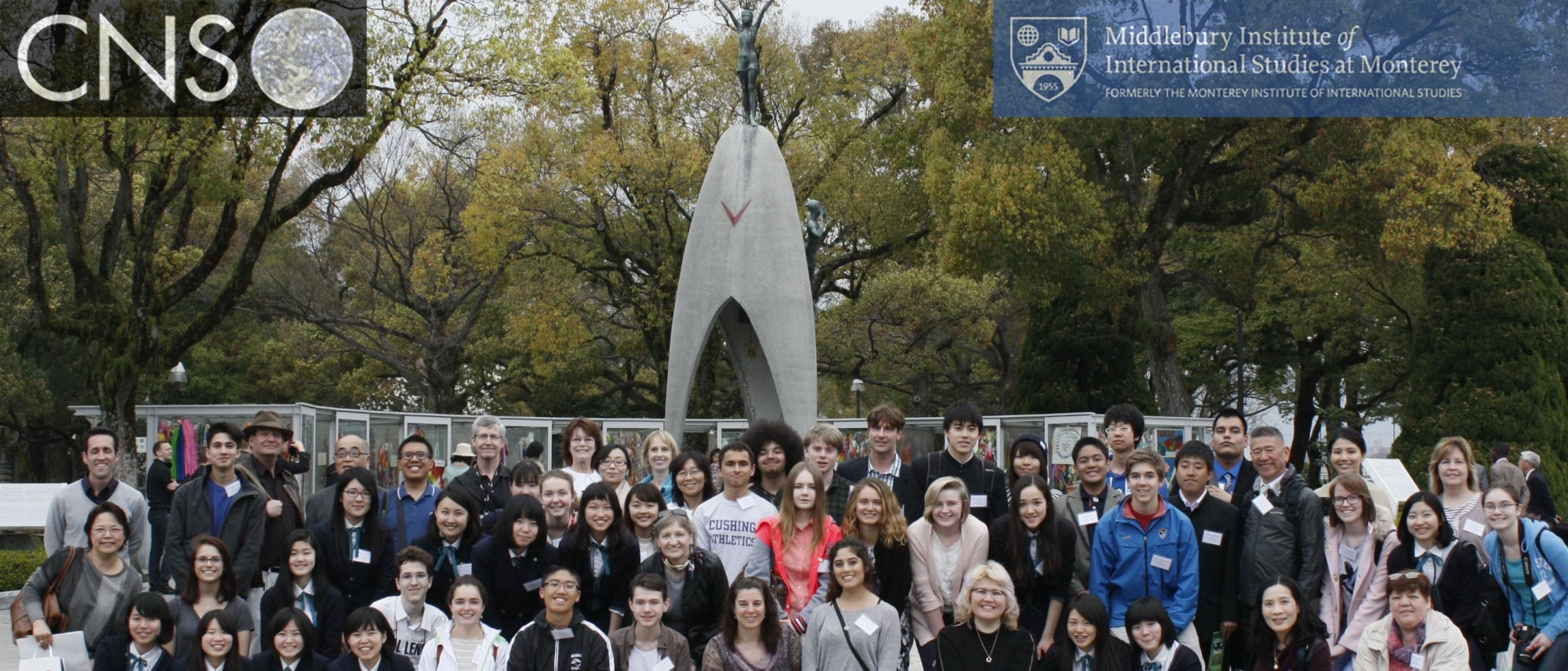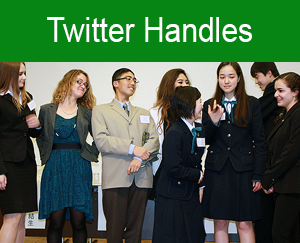2015-2016 Critical Issues Forum
Useful Resources
Topic: Global Nuclear Vulnerability: Lessons for a More Peaceful World
*Please note that more resources will be added to the section of “This year’s topic-specific resources.”
General resources
Nuclear Threat Initiative Tutorials
http://tutorials.nti.org/table-of-contents/
- Nuclear 101 – http://tutorials.nti.org/nuclear-101/overview/
- Nonproliferation Regimes http://tutorials.nti.org/nonproliferation-regime-tutorial/nti-nuclear-nonproliferation-regime-treaties-by-country/
- Non-proliferation Treaty (NPT) Tutorial http://tutorials.nti.org/npt-tutorial/introduction/
Melissa Gillis, “Disarmament: A Basic Guide”, United Nations
((NPT–section 4, beginning on page 31)
Which Countries Have Nuclear Weapons-BBC News World-Video
http://www.bbc.co.uk/news/world-24277021
United Nations Audio Visual Library of International Law– NPT
http://legal.un.org/avl/ha/tnpt/tnpt.html
United Nations Disarmament Education
http://www.un.org/disarmament/education/
US State Department–NPT
http://www.state.gov/t/isn/npt/
Nuclear Disarmament Resource Collection
http://www.nti.org/analysis/reports/nuclear-disarmament/
Global Zero Interactive Map
http://www.globalzero.org/map
Nuclear Notebook (for nuclear weapons numbers)
http://bos.sagepub.com/cgi/collection/nuclearnotebook
What is Nuclear?
www.whatisnuclear.com
Nick Touran, “What is Nonproliferation?”
http://www.whatisnuclear.com/articles/proliferation.html
U.S.-Russia Nuclear Arms Control, Council on Foreign Relations
http://www.cfr.org/arms-control-disarmament-and-nonproliferation/us-russia-arms-control/p21620
William Harris, Craig Freudenrich, Ph.D. and John Fuller, “How Nuclear Bombs Work”
http://science.howstuffworks.com/nuclear-bomb.htm
How Stuff Works: Nuclear Weapons
http://science.howstuffworks.com/search.php?terms=nuclear+weapons
Federation of American Scientists: The Nuclear Information Project
http://fas.org/issues/nuclear-weapons/
Nuclear Threat Initiative 3-D Research Model of Facilities
https://www.youtube.com/user/webmasternti2010?feature=mhee
This year’s topic-specific resources:
Back to the Nuclear Brink New! By Daryl G. Kimball March 2016
The Nuclear Threat is More Complex and Unpredictable Than Ever New! December 31, 2015
See Inside the Underground Bunker That Could Launch a Nuclear War New! By Dan Sagalyn, pbs newshour, Feb 25, 2016.
Reducing the Risk of Nuclear War: Taking Nuclear Weapons Off High Alert New!
Union of Concerned Scientists, Feb 12, 2016.
Six Things You Should Know About the U.S. Nuclear Weapons Arsenal New!
On Reinvent.net website, Feb 1, 2016.
Lowering Nuclear Risks: An Interview with Former Defense Secretary William Perry New!
Interviewed by Daniel Horner and Kingston Reif, Arms Control Today, Jan/Feb 2016
The Risk of Nuclear Catastrophe is Greater Today than during the Cold War New!
By William J. Perry, The Huffington Post, January 20, 2016
Nuclear weapons risk greater than in cold war, says ex-Pentagon chief New!
The Guardian, January 7, 2016
As U.S. Modernizes Nuclear Weapons, ‘Smaller’ Leaves Some Uneasy New!
William Broad and David Sanger, The New York Times, January 11, 2016
Nuclear Weapons Countries: Military Incidents New!
March 2014-November 2015
Global Zero
Beyond the Summit: New Approaches to Nuclear Approaches New! by Gov Jerry Brown and Sec William J Perry
Future of Life New!
Why you should care about nukes New!
William J. Perry Project Website
My Journey at the Nuclear Brink, (BOOK)
By William Perry, Former US Secretary of Defense
http://www.sup.org/books/title/?id=25448
My Personal Journey At the Nuclear Brink
Dr. William Perry, Former US Secretary of Defense,
http://www.europeanleadershipnetwork.org/my-personal-journey-at-the-nuclear-brink-by-bill-perry_633.html
Close Calls With Nuclear Weapons (Fact Sheet)
Union of Concerned Scientists
Close Calls With Nuclear Weapons
NTI
Avoiding War in Europe: The Risks From NATO-Russian Close Military Encounters
Ian Kearns – Arms Control Association
The Greatest Terrorist Threat: How to Stop Nuclear Material from Falling into the Wrong Hands
Sam Nunn, Richard Lugar, and Des Browne – Politico
Close Encounters: Risking an Accidental War
John Donnelly – CQ
Remembering the Cuban missile crisis, with humility
Benoit Pelopidas – European Leadership Network
NATO War Games Unwittingly Put Soviets and U.S. on ‘Hair Trigger’ in ’83, Analysis Suggests
Sam Roberts – New York Times
How a nuclear near-miss in ’95 would be a disaster today
Theodore Postol – Boston Globe
Disarm and Modernize
John Mecklin – Foreign Policy
5 Cold War Close Calls
Evan Andrews – History
Could U.S.-Russia Tensions go Nuclear?
Bruce Blair – Politico
20 Mishaps that Might Have Started a Nuclear War
Alan F. Philips – Nuclear Files
13 Times the U.S. Almost Destroyed Itself With It’s Own Nuclear Weapons
Bethan Owen – Deseret
Nuclear Command and Control: A History of False Alarms and Near Catastrophes
Eric Schlosser – NPR
Honey, There’s a Nuclear Bomb in the Yard
Japan Times
Analysis/Fact Sheets
Global Zero Report on Nuclear Risk Reduction: De-Alerting and Stabilizing the World’s Nuclear Force Postures
Global Zero
Too Close for Comfort: Cases for Nuclear Use and Options for Policy
Patricia Lewis, Heather Williams, Benoit Pelopidas, and Sasan Aghlani – Chatham House Report
Close Calls With Nuclear Weapons
NTI
Close Calls With Nuclear Weapons (Fact Sheet)
Union of Concerned Scientists
Country-specific Information
Arms Control Association
A web source on arms control containing issue briefs, fact sheets, threat assessment briefs, and current event reports.
http://www.armscontrol.org
Nuclear Threat Initiative Country Profiles
http://www.nti.org/e_research/profiles/index.html
Multimedia
Movies, videos, interactive maps
The Bomb
PBS Video
A powerful story of the most destructive invention in human history, outlining how America developed the nuclear bomb, how it changed the world and how it continues to loom large in our lives. Witness the raw power and strangely compelling beauty of rare views of above-ground nuclear tests.
http://video.pbs.org/program/bomb/
NukeMap by Alex Wellerstein
(Interactive Map that allows you to simulate the real life effects of a Nuclear Bomb in any area)
United Nations
http://www.unmultimedia.org/photo/
International Atomic Energy Agency
http://www.iaea.org/newscenter/multimedia
Comprehensive Nuclear Test Ban Treaty Preparatory Commission
http://www.ctbto.org/photos/
EU Non-Proliferation and Disarmament Conference 2015 First Plenary Session
The NPT Review Conference and the Future of Nuclear Disarmament
http://www.iiss.org/en/events/eu%20conference/sections/eu-conference-2015-6aba/plenary-1-b248
INTERNATIONAL ORGANIZATION Resources/General Information on Nuclear Disarmament
United Nations
United Nations Office for Disarmament Affairs (UNODA)
Main website for sources pertaining to disarmament containing spotlights on recent developments, updates and announcements.
http://www.un.org/disarmament/
United Nations Institute for Disarmament Research
http://www.unidir.org/
Treaty on the Non-Proliferation of Nuclear Weapons (NPT)
Text and documents from NPT and PrepCom Conferences.
http://www.un.org/disarmament/WMD/Nuclear/NPT_Review_Conferences.shtml
Applying a Disarmament Lens to Gender, Human Rights, Development, Security, Education and Communication: Six Essays
http://www.un.org/disarmament/HomePage/ODAPublications/CivilSocietyAndDisarmament/2012/NGO_pub_2012.pdf
Comprehensive Test Ban Treaty Organization
Main website for treaty text and status, recent news, international monitoring system status, and updates.
http://www.ctbto.org
Nuclear Weapons Free Zones
UNODA
Overview, map, definition
http://www.un.org/disarmament/WMD/Nuclear/NWFZ.shtml
Selected NGO/Research Institutes:
Acronym Institute
http://www.acronym.org.uk/
Arms Control Association:
http://www.armscontrol.org
Arms Control Today
http://www.armscontrol.org/aca/428
Bulletin of the Atomic Scientists
http://www.thebulletin.org/
Carnegie Endowment for International Peace’s Nuclear Policy Program
http://carnegieendowment.org/programs/npp/index.cfm?fa=proj&id=116
Center for Arms Control, Energy, and Environmental Studies
http://www.armscontrol.ru/
Center for Defense Information (joined the Project on Government Oversight)
http://www.pogo.org/about/cdi-joins-pogo.html
Center for Strategic and International Studies
http://www.csis.org/
Federation of American Scientists
http://www.fas.org
Global Security Institute
http://www.gsinstitute.org/
GlobalSecurity.org
http://www.globalsecurity.org/
Institute for National Strategic Studies
http://www.ndu.edu/inss/
International Institute for Strategic Studies (IISS)
https://www.iiss.org/
International Relations and Security Network (ISN)
http://www.isn.ethz.ch
International Campaign to Abolish Nuclear Weapons (ICAN)
http://www.icanw.org/
National Institute for Public Policy (NIPP):
http://www.nipp.org
Natural Resources Defense Council:
http://www.nrdc.org/nuclear/nuguide/guinx.asp
Nuclear Age Peace Foundation
https://www.wagingpeace.org/
PIR Center (Moscow)
http://www.pircenter.org
Ploughshares Fund
http://ploughshares.org/
Physicians for Social Responsibility (Nuclear Weapons)
http://www.psr.org/nuclear-weapons/
Reaching Critical Will
http://www.reachingcriticalwill.org/
Stockholm International Peace Research Institute (SIPRI)
http://www.sipri.se
Union of Concerned Scientists
http://www.ucsusa.org/nuclear-weapons
Blogs
Arms Control Wonk
http://armscontrolwonk.com/
Federation of American Scientists Strategic Security Blog
http://www.fas.org/blog/ssp/
Arms Control Now (Blog of Arms Control Association)
http://armscontrolnow.org/







